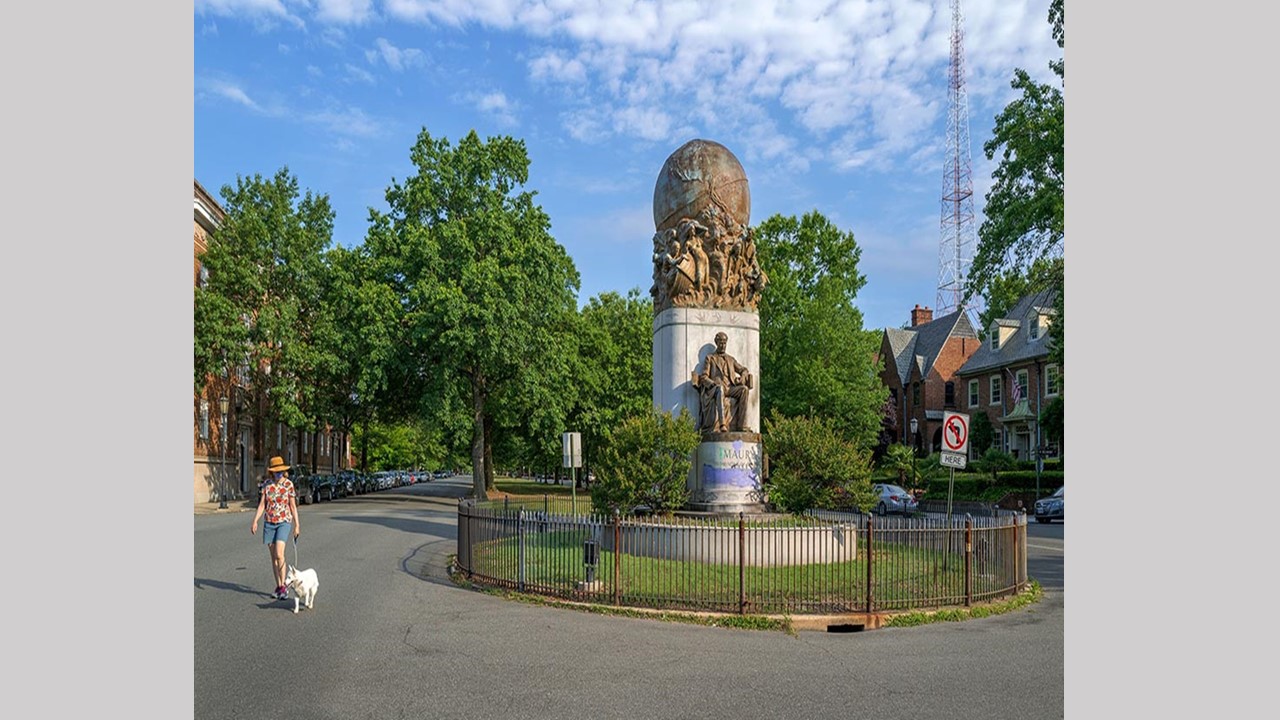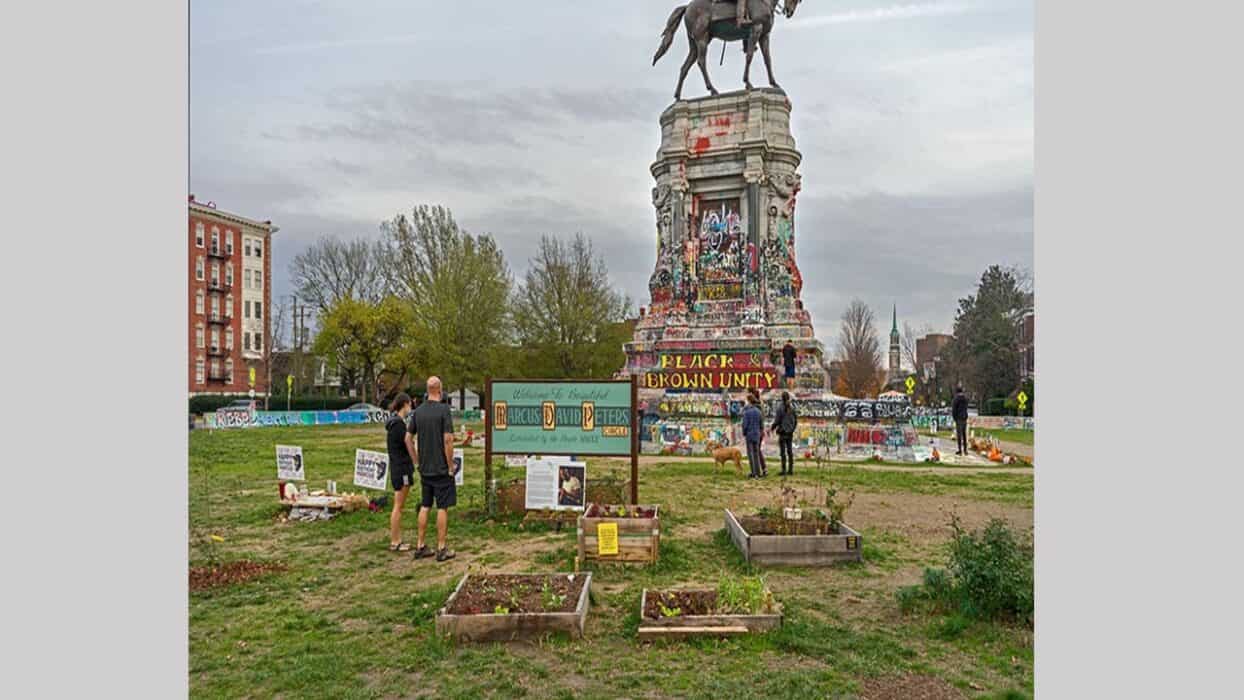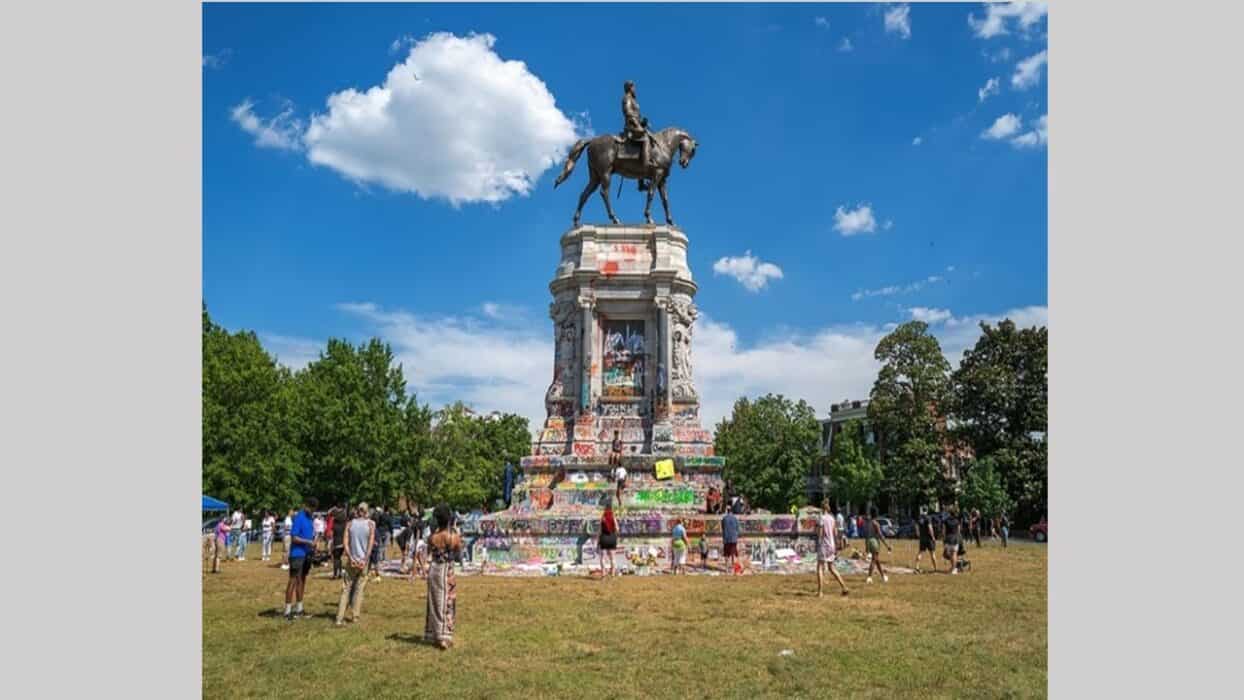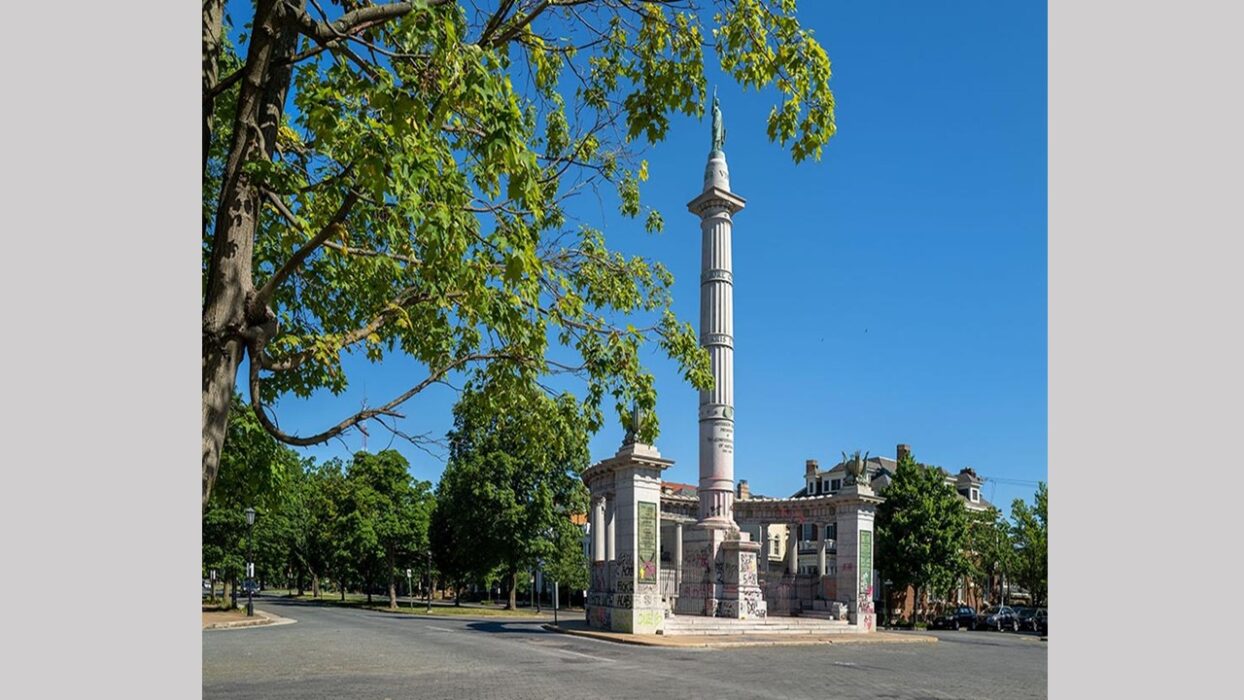The most prominent statues along Monument Avenue depicted Confederate generals on horseback, heroic battlefield leaders, perched on pedestals high above the heads of onlookers. An exception was the memorial to Matthew Fontaine Maury, a naval officer, who was nicknamed Pathfinder of the Seas. He charted the world’s oceans, and his profile of the Atlantic seabed helped prove the feasibility of laying the first transatlantic telegraph cable. Upon the outbreak of the Civil War, Maury chose to lend his skills to the Confederate navy, and served in England as a representative of the Confederacy. On Monument Avenue he sat on a chair with the globe above his head surrounded by highly animated sculptural elements representing his roles as oceanographer and meteorologist.

Matthew Fontaine Maury Monument
Maury’s memorial was left mostly untouched by the protesters who marched up and down Monument Avenue during the summer of 2020 probably because they had little understanding of who he was and what he represented. Unfortunately, for Maury, his legacy was forever tarnished by his allegiance to the Confederacy.
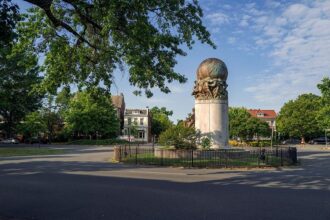
Matthew Fontaine Maury Monument
While the focus on the Monument Avenue statuary reached a climax that summer, the controversy surrounding these increasingly problematic objects was hardly new. In fact, from the beginning they were considered provocations by many in the north, and in the prominent Black newspaper “The Richmond Planet,” editor John Mitchell, Jr. wrote: “This glorification of States Rights Doctrine – the right of secession, and the honoring of men who represented that cause…will ultimately result in handing down to generations unborn a legacy of treason and blood…it serves to reopen the wound of war.”
In the 1990s, in an attempt to bring balance to Monument Avenue, the city erected a statue in honor of Arthur Ashe, the Black tennis champion and native son of Richmond, who had tragically died of AIDS. Although the memorial was originally intended for a formerly Whites only recreational park – one that Ashe was not allowed to play in – Douglas Wilder, the first African American governor of Virginia, insisted on it being located on Monument Avenue. After much debate, with both Whites and Blacks expressing reservations about the placement of Ashe in juxtaposition to the heroes of the Confederacy, the city council voted to go forward with the proposal.

Arthur Ashe statue
Coming across the Ashe memorial, I was immediately struck by the awkwardness of the whole arrangement. Along this stretch of Monument Avenue, there was little of the urban architectural grandeur of the boulevard closer to downtown. And the sculpture itself was diminutive, even cartoonish. Ashe is depicted holding books and a tennis racket in the air as children reach up to him – as if pleading for mercy. Or so it appears. The memorial meant to honor this Richmond hero fell sadly short in its execution. While down the street, the masterfully rendered monuments to insurrection and treason continued to hold sway.
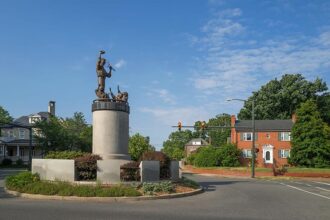
Arthur Ashe statue
Click here for the other parts of this blog series.
Born in Virginia, Brian Rose moved to New York City in 1977 where he photographed the Lower East Side of Manhattan, and later participated in a survey of the Financial District, funded by the National Endowment for the Arts. Rose has since undertaken a number of long-term projects in Europe including documenting the Berlin Wall and the Iron Curtain, the rebuilding of Berlin, and the urban landscape of Amsterdam. In response to the election of Donald Trump in 2016, Rose photographed Atlantic City, the scene of Trump’s bankrupt casinos. He published a blog about this project for the John Adams Institute, called Atlantic City, Forlorn. Click here for his book about Monument Avenue in Richmond. Rose’s images have been collected by the Museum of Modern Art and the Metropolitan Museum of Art, and he has produced nine books.
National Endowment for the Arts. Rose has since undertaken a number of long-term projects in Europe including documenting the Berlin Wall and the Iron Curtain, the rebuilding of Berlin, and the urban landscape of Amsterdam. In response to the election of Donald Trump in 2016, Rose photographed Atlantic City, the scene of Trump’s bankrupt casinos. He published a blog about this project for the John Adams Institute, called Atlantic City, Forlorn. Click here for his book about Monument Avenue in Richmond. Rose’s images have been collected by the Museum of Modern Art and the Metropolitan Museum of Art, and he has produced nine books.
